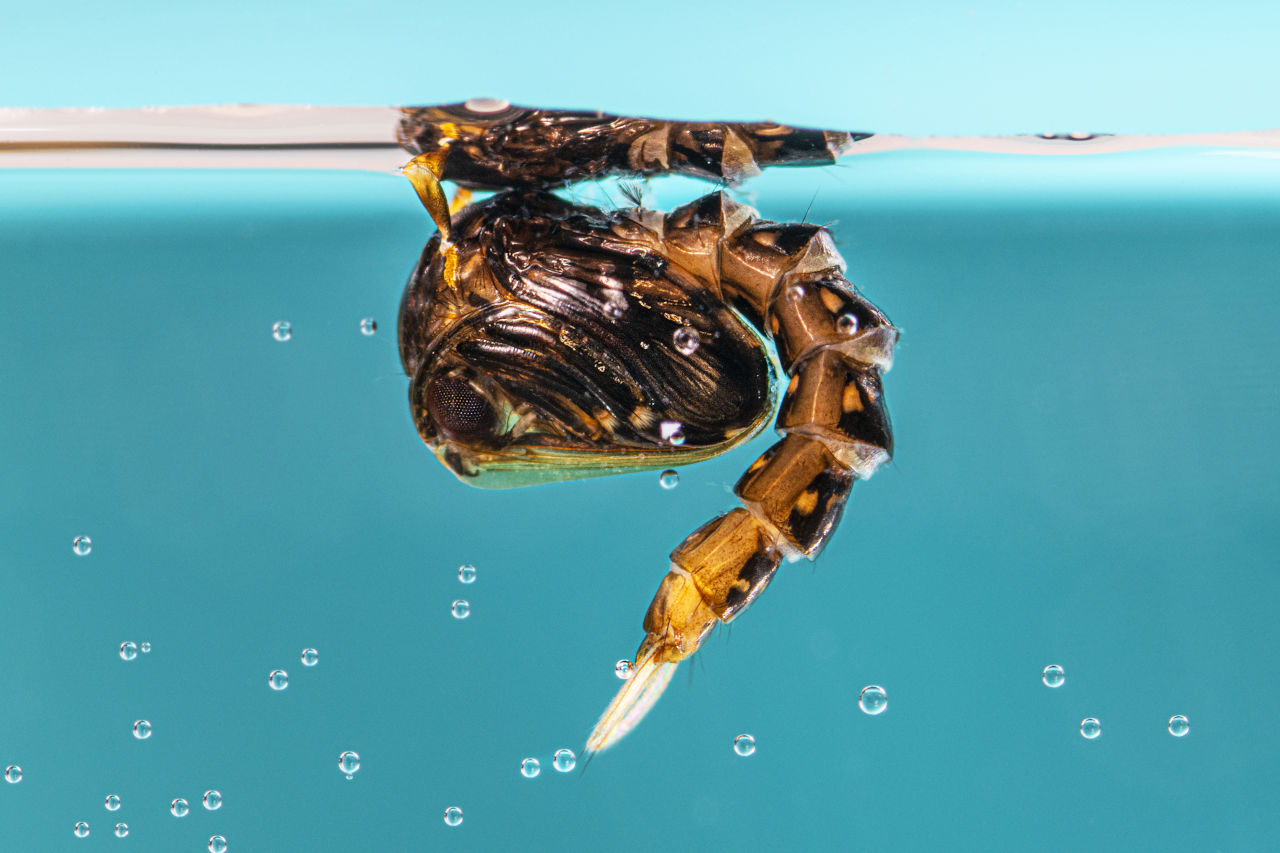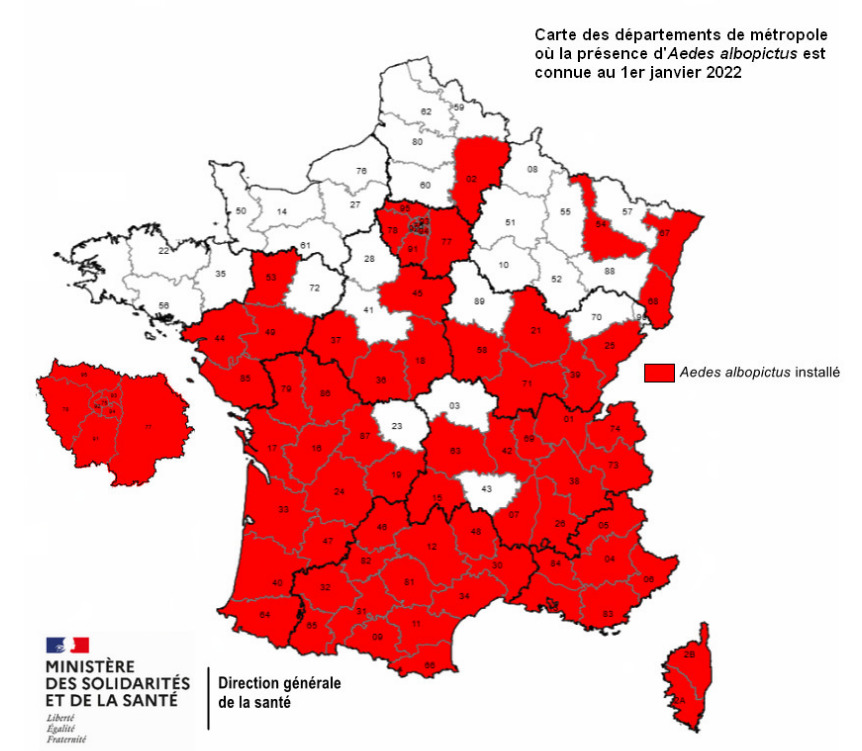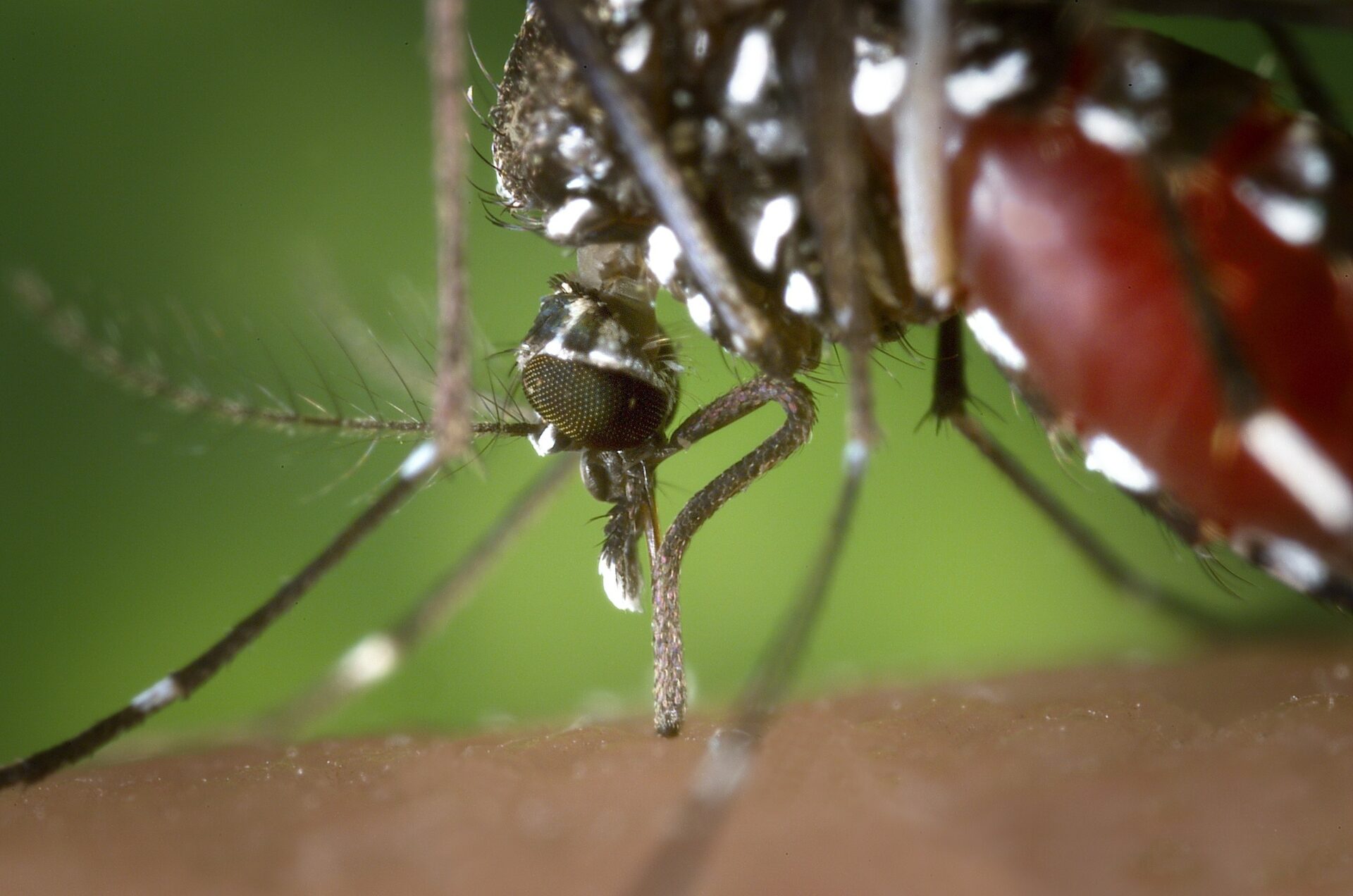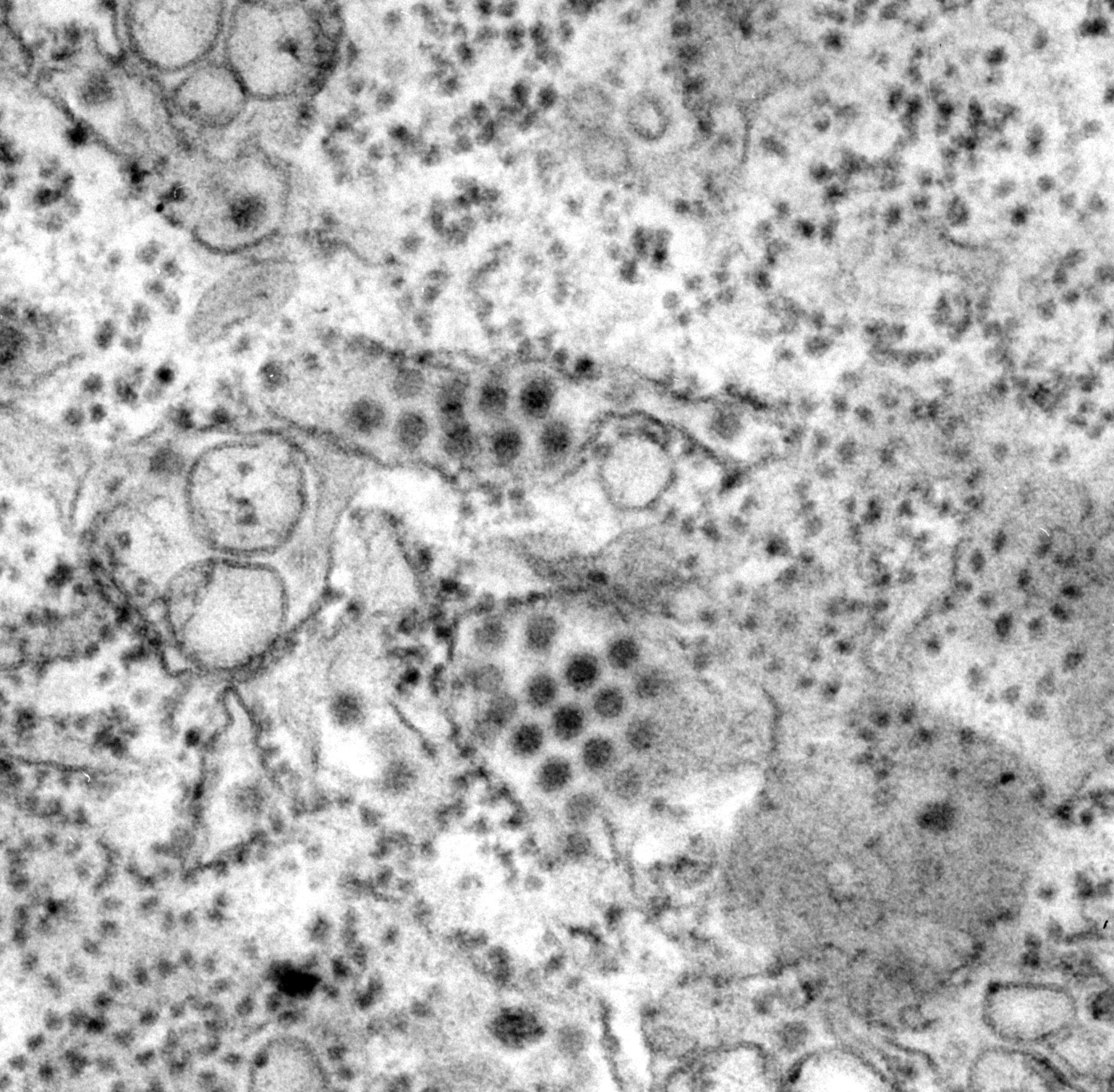Cases of dengue fever are exploding in mainland France: what do you need to know?
An unprecedented number of cases of dengue fever have been identified in mainland France since mid-summer. In fact, by mid-September, almost forty "native" cases - in other words, infections contracted on French territory, without the patients having travelled abroad - had already been reported, which is more than the cumulative total for the last 10 years.
Yannick Simonin, University of Montpellier

Tiger mosquito pupae, which give birth to adults that can transmit dengue fever and other diseases, live in aquatic environments.
CDC/ Amy E. Lockwood, MS / Lauren Bishop
The disease has also broken out in departments where it had never been detected before. With the number of infections likely to continue rising over the coming days and weeks, which regions are affected? What are the most likely causes of this exceptional situation? Could this situation be a cause for concern?
[More than 80,000 readers trust The Conversation newsletter to better understand the world's major issues. Subscribe today]
In Alpes-Maritimes, the largest outbreak ever identified in mainland France
Currently, of the five départements affected by the disease, three are in the Occitanie region and two in the Provence-Alpes-Côte d'Azur (PACA) region.
In Occitanie, four cases were identified in the same habitat, in the commune of Salvetat Saint-Gilles, 20 km west of Toulouse, in Haute-Garonne; 3 cases were reported in the communes of Andrest and Rabastens-de-Bigorre, 15 km apart, in the Hautes-Pyrénées; 1 case was detected in Perpignan, in the Pyrénées-Orientales. The dengue virus had never been identified in the latter two departments.
In the PACA region, the two departments affected are the Var, with six cases identified in Fayence, and above all the Alpes Maritimes, with 26 cases identified in three communes located less than 10 km apart: Saint Jeannet, Gattières and La Gaude. The geographical and temporal proximity of these new cases - they all occurred within the space of a month - points to a single episode of virus circulation in these three communes. This outbreak is already the largest ever identified in mainland France. It is still active, the last cases having been identified at the beginning of September. Further cases are likely to be identified in the near future.
Until now, the number of native dengue infections in mainland France has been very limited. Since the first case was reported in 2010, it is estimated that there have been fewer than thirty, with only a few infections identified each year. The number of cases reported this year therefore already exceeds the total number of cases identified over the last 15 years.
As dengue is often asymptomatic (in around 70% of cases), it can go largely undetected. In addition, with the Covid-19 pandemic, the diagnosis of other viral diseases has probably been underestimated over the last two years. This may have particularly affected various arboviroses, including dengue fever. The actual number of cases is therefore probably greatly underestimated.
Why such an explosion? While it was difficult to anticipate an increase in the circulation of dengue fever such as the one we're experiencing in 2022, in recent years there have been several signs that vector-borne diseases are on the rise.
The mosquito vector has invaded our territory

Ministère des Solidarités et de la Santé
The virus that causes dengue fever is transmitted by mosquitoes belonging to the Aedes genus, which includes the tiger mosquito(Aedes albopictus). Since it was first detected in France in 2004 in Menton, this small black mosquito with white-striped body and legs, native to Southeast Asia and the Indian Ocean, has been steadily expanding its range in France.
In less than 20 years, it has invaded 67 of France's 96 départements (compared with just 58 in 2020!). Its spread throughout the country is inexorable.

Pxhere
A major nuisance during the summer months (some tourist areas are infested with them), the tiger mosquito is capable of transmitting, in addition to the dengue virus, various viruses responsible for diseases in humans, including the Zika and chikungunya viruses. The spread of tiger mosquitoes on our territory increases the risk of propagation of the diseases they cause.
Of the three viruses responsible for tropical diseases, dengue is currently the most prevalent in mainland France, particularly in the southern regions where the density of tiger mosquitoes is highest.
A risk increased by environmental and climatic changes
Weather conditions, particularly temperature, humidity and precipitation, affect the geographical distribution and activity of mosquitoes. In some cases, they increase their proliferation and lifespan.
This summer has been exceptional, with alternating scorching heat and intense rainfall, particularly in the southern regions, leading to a significant increase in the number of mosquitoes.
Indeed, while their eggs need water to complete their development process, they are nonetheless highly resistant in the environment. In the event of drought, they can remain viable for up to several years, enabling them to survive until hatching conditions become favorable again.
This explosion in mosquito populations has increased the risk of transmission of the dengue virus, itself already heightened by the resumption of international trade and tourism.
Tourism and trade encourage the spread of pathogens
Trade and tourism, which have grown exponentially in recent decades, can facilitate the dissemination of viral diseases, particularly those spread by vectors such as mosquitoes.
Proof of the importance of these factors is that, during the Covid-19 pandemic, the number of cases of dengue infection from people returning from travel outside the West Indies fell considerably, mainly due to the drastic drop in international air travel. With the marked upturn in air traffic this year, an increase in imported cases has been observed: from May1 to September 2, 2022, Santé publique France counted 165 imported cases of dengue fever in France, which is already as many as for the whole of 2021...
These imported cases carry the risk of "local" outbreaks, as long as the mosquito that carries the disease is present locally. All the more so as dengue is the most common and widespread arbovirosis in the world.
How is dengue transmitted?
Originating in Africa, the dengue virus is an arbovirus(ARthropod-BOrne VIRUS) transmitted by blood-feeding insects. It belongs to the Flavivirus genus, like the Zika virus, or the yellow fever and West Nile viruses, other arboviruses.
When a mosquito bites an infected person, it ingests the blood in which the dengue virus is present. The virus then multiplies in the mosquito's body, which transmits it to another individual when it bites again.
The first cases of dengue fever were recorded on the American continent in the 18th century. The disease is well known in many tropical and subtropical regions of the world, from Africa to Asia and Latin America. The French overseas territories have not been spared: Réunion, Guadeloupe and Martinique have suffered recurrent epidemics in recent years.
An often asymptomatic but sometimes serious disease
Dengue is sometimes referred to as the "tropical flu", as its symptoms are most often flu-like: sufferers have a fever, headaches, aches and pains... They may also develop a rash.
The disease manifests itself between 3 and 14 days after mosquito bite, with an average of 4 to 7 days. The patient generally recovers spontaneously within a few days, but significant fatigue persists for several weeks.

Frederick Murphy/CDC
At present, there is no specific treatment for dengue fever. A vaccine does exist (Dengvaxia), but it remains little used due to numerous limitations concerning its use. This vaccine has the disadvantage of increasing the risk of hospitalization and severe dengue fever in people not previously infected with the dengue virus. It is mainly prescribed for people living in endemic areas who have already been infected with the dengue virus.
Management of the disease consists mainly in treating symptoms, notably pain and fever. Aspirin and non-steroidal anti-inflammatory drugs are strictly contraindicated due to the risk of bleeding.
The main problem associated with dengue fever is the risk of developing what is known as severe dengue fever or dengue hemorrhagic fever, which can be complicated by an often fatal state of shock. Dengue hemorrhagic fever is characterized by respiratory distress associated with multiple hemorrhages.
Fortunately, this form of dengue fever affects only a small percentage of those infected: 1% to 5%. Some individuals may also develop severe neurological damage, such as encephalitis, but these complications are extremely rare.
Four different types of virus, but no cross-immunity
There are four different types of dengue virus, distinguished from each other by subtle modifications in their antigens (antigens are structures whose detection by the immune system leads to its reaction and the production of antibodies - they can be proteins, lipids, sugars, etc.).
These four dengue virus serotypes, named DENV-1, DENV-2, DENV-3 and DENV-4, although relatively similar, are sufficiently different not to confer long-term cross-protection. In other words, while infection with one of the serotypes provides immunity, it does not offer protection against the other three. You can therefore be consecutively infected with all 4 serotypes of dengue during your lifetime.
In mainland France, at least two serotypes, DENV-1 and DENV-3, were identified this year. This means that the dengue virus was introduced to the country several times this summer.
Mosquito control as a preventive measure
Following the discovery of cases of infection, the same scenario unfolds: mosquito control operations are carried out in the vicinity of detected cases, accompanied by awareness-raising campaigns aimed at the public and healthcare professionals (as well as door-to-door surveys), conducted in collaboration with ARS, Santé publique France and mosquito control agencies such as Altopictus or theEntente interdépartementale de démoustication.
Currently, the best way to prevent the spread of mosquito-borne viruses such as dengue is to limit the proliferation of these insects and protect yourself from their bites.
To reduce the development of mosquito larvae, we recommend emptying all containers of stagnant water, especially flowerpot bowls and watering cans, and covering rainwater receptacles, especially during periods of heavy rainfall. To reduce the risk of being bitten, use suitable repellents and wear loose-fitting, covering clothing.
Strengthening surveillance networks is currently one of the best strategies for combating these new, hard-to-anticipate threats.
Fortunately, in our country, the threat of arboviruses, including dengue, remains sporadic for the time being, and the risk of epidemics limited.
Yannick Simonin, Virologist, lecturer in surveillance and study of emerging diseases, University of Montpellier
This article is republished from The Conversation under a Creative Commons license. Read theoriginal article.